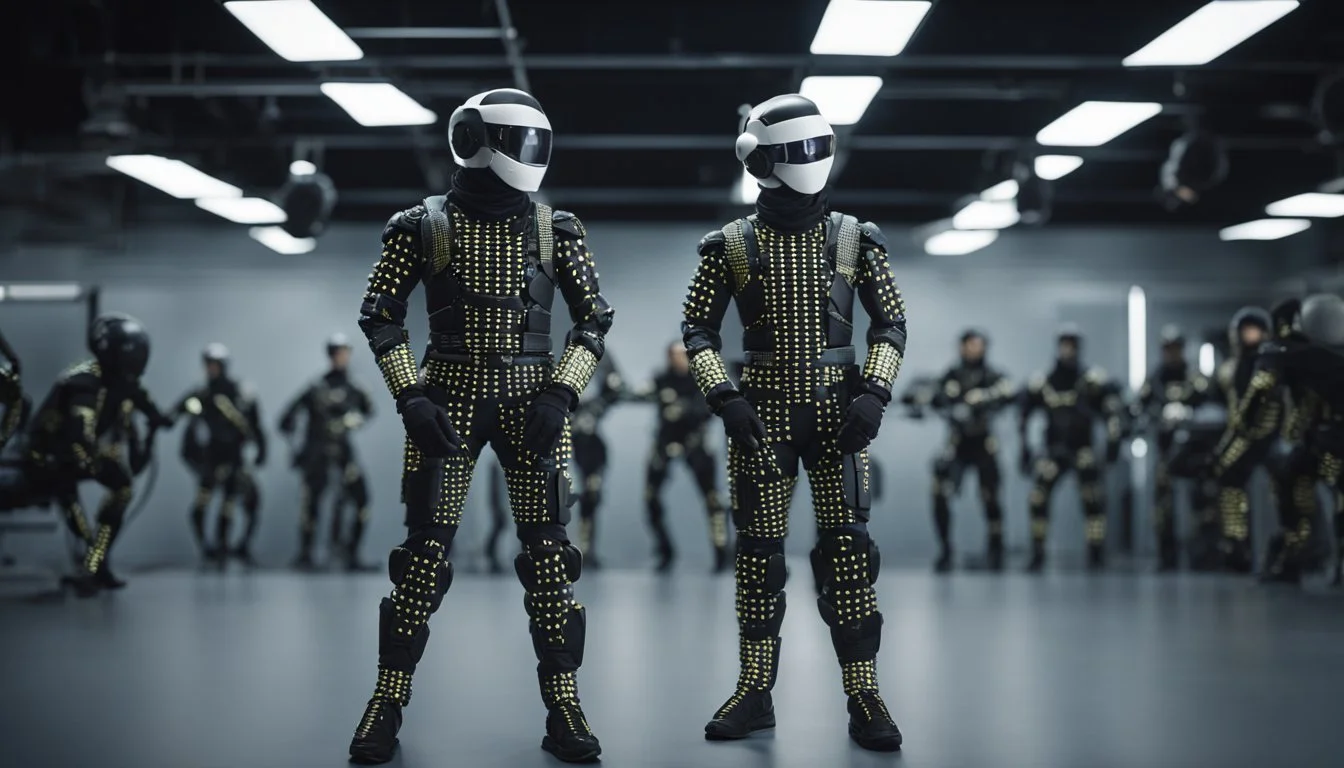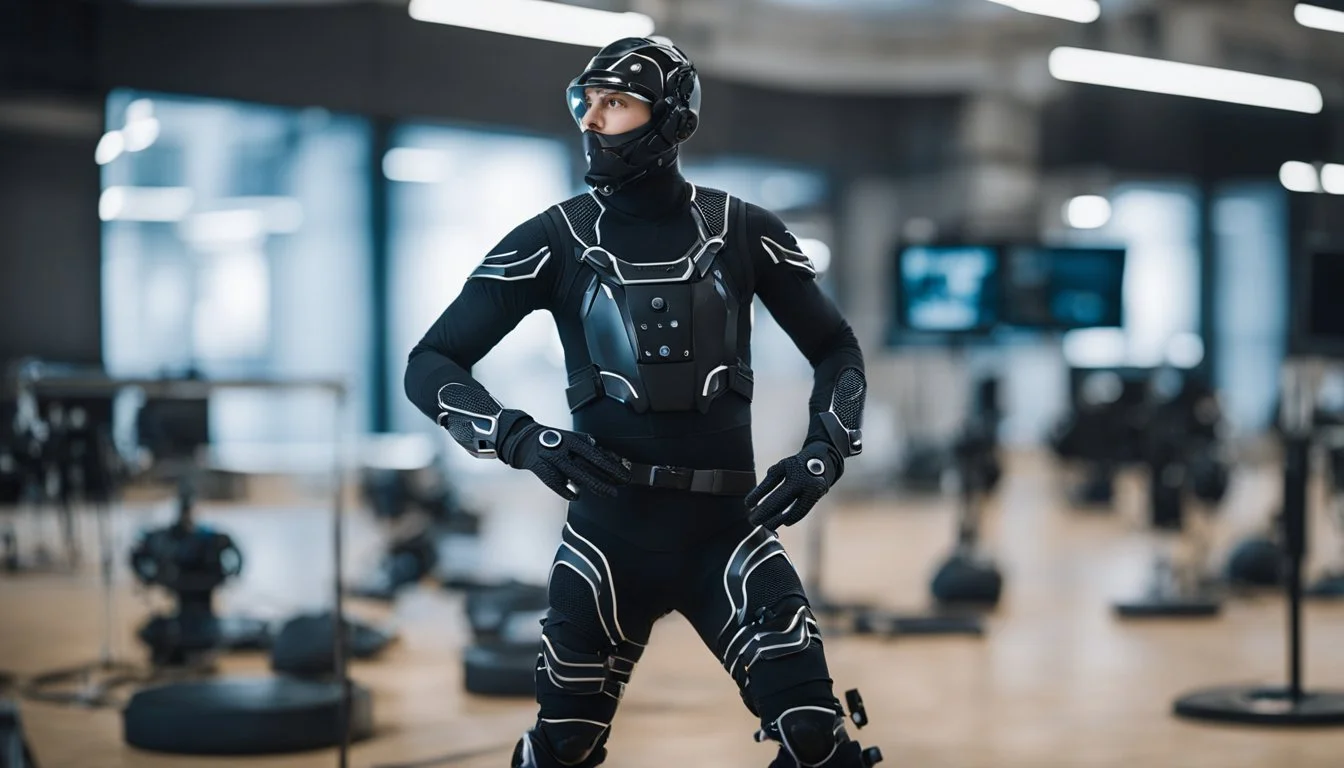5 Innovative Ways to Use Motion Capture Technology in Your Films
Enhancing Creativity and Efficiency
Motion capture technology has revolutionized the film industry, allowing filmmakers to create more immersive and lifelike characters. By capturing an actor's movements and converting them into digital data, directors can achieve an unprecedented level of realism and detail in their visual storytelling.
This article explores five innovative ways to integrate motion capture into film production, enhancing creative possibilities and pushing the boundaries of cinematic experiences. Whether working in fantasy, science fiction, or even drama, filmmakers can leverage this technology to bring unique visions to life in ways previously unimaginable.
1) Character Animation Enhancement
Motion capture technology significantly enhances character animation by capturing intricate human movements. This realistic data forms the foundation for animators to create detailed and expressive animations.
By recording real-life actions, motion capture bridges human performance with animated characters. This fusion leads to more immersive and believable animations in films.
Animators refine the captured movements, adding expressive nuances. This process transforms the raw data into fluid and emotive animations, which elevate the storytelling in film projects.
Newer advancements in AI further amplify motion capture's impact. AI algorithms refine and polish the motion data, ensuring the animations remain lifelike and engaging. This ensures characters move with authenticity and precision.
2) Virtual Production Integration
Virtual production integration represents a groundbreaking merge of physical and digital filmmaking. By employing real-time rendering and powerful visualization software, filmmakers can see virtual elements blend seamlessly with live-action footage.
Directors and cinematographers can experiment with camera angles and lighting in a previsualized, virtual environment. This flexibility enhances creativity and planning, reducing on-set errors and delays.
Motion capture is a key component, enabling live human performances to control digital characters. This real-time interactivity fosters natural and dynamic performances, captured efficiently.
Collaboration is crucial in virtual production. Directors, directors of photography, VFX supervisors, and the Virtual Art Department work together to align their visions. This teamwork ensures a cohesive and visually stunning final product.
Integration of virtual production also allows for advanced previsualization techniques. Detailed planning of scenes, choreography, and visual effects can be done before actual shooting starts.
3) Facial Expression Capturing
Facial expression capturing, also known as facial motion capture, has revolutionized character animation. By recording an actor's facial movements, it translates those nuances into digital data. This allows for creating lifelike characters in films and video games.
Modern technology uses specialized cameras and sensors. These devices are capable of capturing subtle expressions in real time. The data collected is processed by advanced software to produce highly detailed animations.
Early systems were largely confined to high-end studios. Due to technological advancements, facial motion capture is now more accessible. Even smaller studios can utilize this technology to achieve professional results.
Machine learning has further enhanced the accuracy of facial expression capturing. Algorithms can now recognize and replicate minute facial movements. This adds an extra layer of realism to animated characters.
The application is not limited to entertainment alone. Real-time facial motion capture can be used in live performances. Actors can bring animated characters to life in front of a live audience.
Utilizing facial expression capturing enriches storytelling. Characters display emotions more authentically, engaging audiences on a deeper level. This technology continues to grow, offering filmmakers endless creative possibilities.
4) Stunt Performance Replication
Stunt performance replication is one of the most exciting applications of motion capture technology. By capturing the movements of stunt performers, filmmakers can create highly realistic and safe action sequences. This not only ensures the safety of the actors but also allows for more elaborate and intricate stunts.
Motion capture suits equipped with sensors track every movement of the stunt performer. These movements are then mapped onto digital characters, ensuring that the virtual characters perform stunts with the same precision as their human counterparts.
This technology proves particularly useful in producing sequences that would be too risky or impossible to execute in real life. As a result, motion capture can significantly reduce the risk of injury on set.
Additionally, it offers the flexibility to make adjustments without requiring reshoots. Subtle tweaks can be made to the digital character's movements, refining the performance to achieve the desired visual effect.
The potential for creativity is vast. Directors can visualize and execute complex action scenes that seamlessly blend the real and digital worlds, pushing the boundaries of traditional stunt work.
5) Crowd Simulation
Motion capture technology is revolutionizing crowd simulation in filmmaking. By capturing the detailed movements of individual actors, it provides a vast library of realistic actions that can be replicated across many digital characters. This technique allows for the creation of dynamic and believable crowd scenes.
AI algorithms paired with motion capture data further enhance this process. These algorithms control how each digital character behaves, interacts, and moves in response to others. The result is a more lifelike crowd, whether in a bustling cityscape or an epic battle scene.
Filmmakers no longer need to rely on large numbers of extras. Instead, they can animate digital characters with varied, realistic behaviors. This approach saves time and resources, while providing consistent and high-quality results.
By integrating individual motion capture data with traditional crowd control techniques, filmmakers achieve greater authenticity. Each character in the crowd can display unique movements, adding to the overall realism.
In summary, motion capture technology combined with AI offers new possibilities for creating complex and realistic crowd scenes in films.
Advanced Visualization Techniques
Advanced visualization techniques in motion capture bring new dimensions to filmmaking, enhancing both the creative process and the viewer's experience. Through real-time animation and immersive virtual production, filmmakers can create more dynamic and lifelike visuals.
Real-Time Animation
Real-time animation involves capturing and processing motion data instantaneously. This allows filmmakers to see the results of motion capture in real time. It enables directors to make immediate adjustments to actor performances, camera angles, and scene composition without the need for lengthy post-production work.
By using real-time animation, filmmakers can iterate more quickly on their creative visions. They can experiment with different movements and angles on the spot, resulting in more creative and engaging scenes. This technique is especially useful in live broadcasts, such as sports events and concerts, where instant feedback is crucial.
Benefits:
Immediate Feedback: Adjust performances and scenes instantly.
Efficiency: Reduce time spent on post-production.
Creativity: Experiment with ideas in real time.
Immersive Virtual Production
Immersive virtual production combines motion capture with virtual reality (VR) environments. This technique allows filmmakers to create digital sets that actors can interact with in real time. Actors wear VR headsets and motion capture suits, allowing them to see and move within a digital world as they perform.
This approach is particularly valuable for creating complex scenes that would be costly or impossible to produce with traditional methods. For example, sci-fi and fantasy films can benefit from detailed, interactive sets without the need for extensive physical construction. Directors and cinematographers can also visualize the final scene as it will appear in the film, aiding in better decision-making.
Key Features:
Interactive Sets: Actors engage with digital environments.
Cost-Effective: Reduce the need for physical set construction.
Enhanced Visualization: See the final scene during the filming process.
By leveraging these advanced visualization techniques, filmmakers can push the boundaries of what is visually possible, creating captivating and immersive content for their audiences.
Character Development and Performance
Motion capture technology enhances character creation by capturing nuanced performances and creating digital doubles that bring unique characters to life. These advancements optimize both the authenticity of performances and the creation of realistic digital characters.
Enhancing Actor Performances
Motion capture allows actors to bring a higher level of depth and authenticity to their roles. By recording their movements, expressions, and gestures, actors can convey complex emotions and physical actions that are faithfully translated into digital characters. This method reduces the need for manual animation and adds a layer of believability to the performance.
Actors can also interact with virtual environments in real-time, enabling them to react naturally and maintain continuity. This enhances the storytelling by integrating realistic human motions and reactions into the digital realm, making scenes more engaging and lifelike.
Creating Digital Doubles
Creating digital doubles involves using motion capture technology to create virtual replicas of actors. These doubles can perform stunts, participate in dangerous scenes, or engage in sequences that are impractical for live-action shots. This not only ensures the safety of performers but also expands the possibilities for creative action sequences.
The process starts with capturing the actor’s movements, which are then used to animate a digital model. Advances in technology ensure that these digital doubles look and move like their real-life counterparts, maintaining consistency and immersion in the film’s visual narrative.
Post-Production Innovations
Post-production innovations in motion capture technology allow filmmakers to seamlessly integrate with CGI and improve editing processes. These advancements enable more lifelike and dynamic films.
Seamless Integration with CGI
Motion capture technology has revolutionized the integration of CGI in films. Accurate motion data captured from actors can be seamlessly applied to digital characters. This ensures that the animations are fluid and lifelike.
By using specialized software, filmmakers can map the minutest details of facial expressions and body movements. This data is then used to create nuanced and detailed CGI characters.
This integration not only enhances the visual quality but also saves time in the animation process, allowing more resources to be allocated to other creative aspects of the film.
Improving Motion Capture Editing
Editing motion capture data has become more refined, offering greater precision and control. Advanced software allows editors to tweak individual frames without starting from scratch.
The ability to adjust specific movements and expressions ensures that the final output aligns with the director's vision. New tools facilitate real-time feedback, enabling quicker decision-making.
Such improvements reduce the need for extensive re-shoots, saving both time and budget. This refined editing process enables a more efficient workflow and enhances the final product's fidelity.




